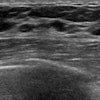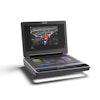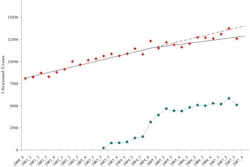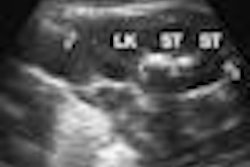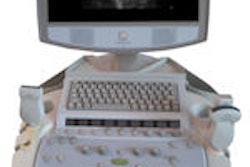Can ultrasound replace radiography to confirm endotracheal intubation? Emergency physicians from Cincinnati Children's Hospital Medical Center in Ohio report that ultrasound verification is faster and highly reproducible, but doesn't achieve the accuracy of a conventional chest x-ray.
However, use of ultrasound does merit further investigation, according to Dr. Benjamin Kerrey and colleagues, whose 16-month experience comparing the two procedures as a way to expedite treatment of patients in an emergency department was published in the June 2009 issue of Pediatrics (Vol. 123:6, pp. 1039-1044).
The study objective was to determine whether ultrasound was equivalent to chest x-ray, as well as to document the time it took to receive results from each type of diagnostic test. Ultrasound exam results were reported to physicians a median of eight minutes faster than the results from a digital chest x-ray.
Of a total of 244 children who required endotracheal tube intubation, the study sample included 127 patients. Patients were not included in the study if their care would have been disrupted, a chest x-ray was not performed, or sonography study volunteers were not available.
For the study, an ultrasound exam was performed only after an end-tidal carbon dioxide measurement had been taken and the patient had received a chest x-ray. Sonographer volunteers were not informed of the results of the chest x-ray, and the clinical team caring for the patient was instructed not to reposition endotracheal tubes based solely on the results of the ultrasound exam. To verify reproducibility, a second ultrasound exam was performed by a different sonographer with 33 of the patients.
Bilateral diaphragmatic motion on ultrasound confirmed tracheal placement, unilateral diaphragmatic motion confirmed bronchial placement, and esophageal placement equaled no motion or paradoxical diaphragmatic motion.
Ultrasound and chest radiograph results were identical for 83% of the patients. For 24 (19%) of the patients, mainstem intubation was not detected.
Ultrasound falsely reported mainstem misplacement in nine of 103 tracheal intubations. The researchers pointed out that if ultrasound had been used as the main determinant of tube repositioning, these nine patients would have been at risk for extubation.
One of the limitations of the study pointed out by the researchers was the use of medical staff who were novice sonographers. They recommend that additional investigational studies be undertaken.
Copyright © 2009 AuntMinnie.com


